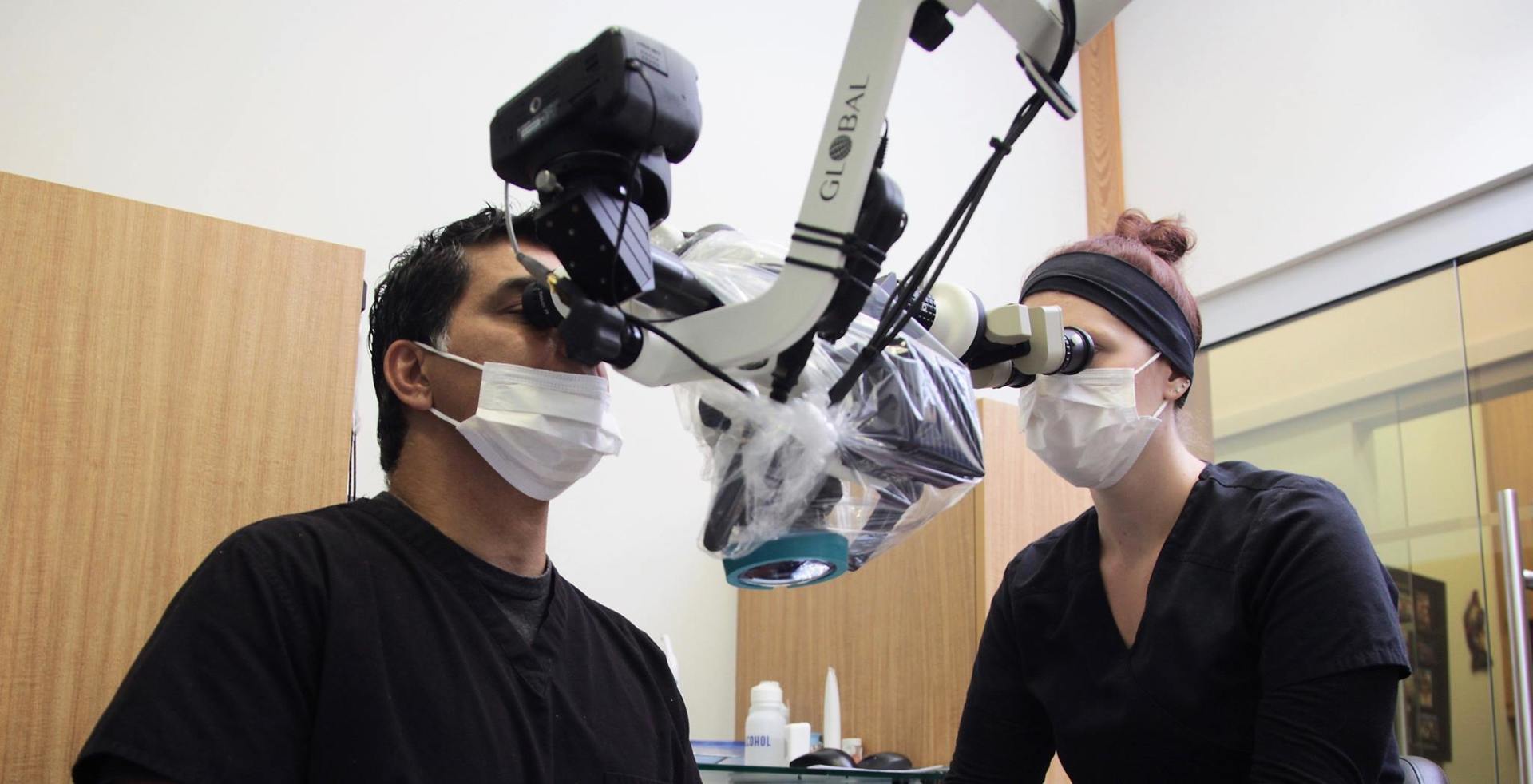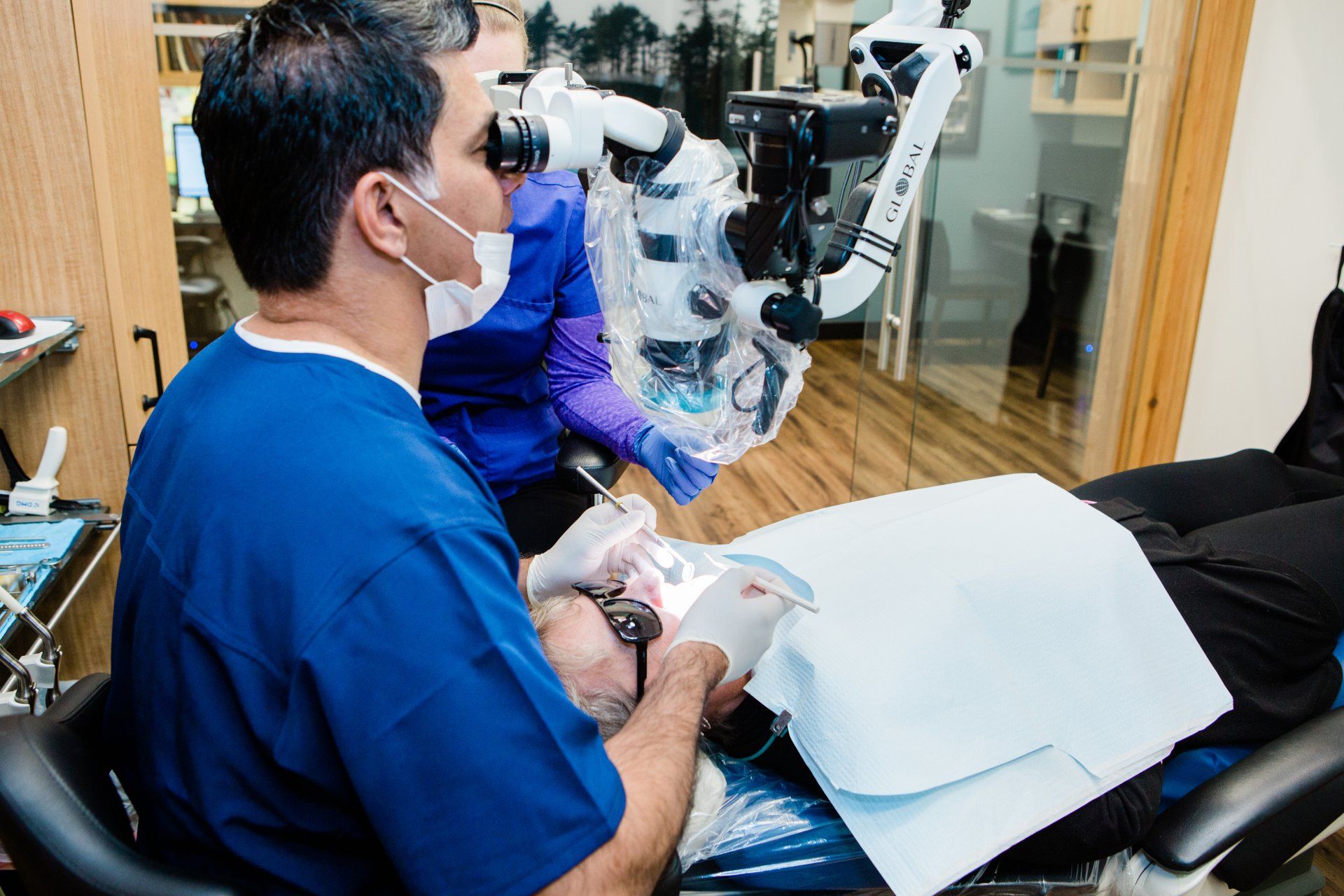Treatments
Types of Endondontic Treatments
That We Offer
Diagnosis
Root Canal Treatment
Retreatment of a Root Canal (Endodontic Retreatment)
With the appropriate care, your teeth that have had endodontic treatment will last as long as other natural teeth. Yet, a tooth that has received treatment may fail to heal or pain may continue to exist. Sometimes, the pain may occur months or years after treatment. If so, there may be a need to perform Endodontic Retreatment.
Improper healing may be caused by:
- Curved or narrow canals that were not treated during the initial treatment.
- Complicated canals that went undetected during the initial treatment.
- The crown or restoration was not placed within the appropriate amount of time following the procedure.
- The crown or restoration that did not prevent saliva from contaminating the inside of the tooth.
In some cases, new problems can influence a tooth that was successfully treated:
- New decay can expose a root canal filling material, causing infection.
- A cracked or loose filling or crown can expose the tooth to new infection.
In general, all cases that are referred for endodontic retreatment will have a prior consultation appointment and a few may have treatment initiated at the same visit. This is because endodontic retreatment usually presents with a range of challenges that need to be carefully evaluated compared to initial treatments especially in terms of benefit for long-term tooth survival and procedural costs.
Apical Surgery or Endodontic Surgery
Generally, a root canal is all that is needed to save teeth with injured pulp from extraction. Occasionally, this non-surgical procedure will not be sufficient to heal the tooth and your endodontist will recommend surgery. Endodontic surgery can be used to locate fractures or hidden canals that do not appear on x-rays but still manifest pain in the tooth. Damaged root surfaces or the surrounding bone may also be treated with this procedure. The most common surgery used to save damaged teeth is an apicoectomy or root-end resection.
An incision is made in the gum tissue to expose the bone and surrounding inflamed tissue. The damaged tissue is removed along with the end of the root tip. A root-end filling is placed to prevent reinfection of the root and the gum is sutured. The bone naturally heals around the root over a period of months restoring full function.
Following the procedure, there may be some discomfort or slight swelling while the incision heals. This is normal for any surgical procedure. To alleviate any discomfort, an appropriate pain medication will be recommended.
Traumatic Dental Injuries
Traumatic dental injuries can happen in many ways: sporting activities, the playground, motor vehicle accidents. Often time is of the essence and traumatized teeth need to be managed very soon after the injury or the chance of survival drops drastically.
Furthermore, traumatized teeth can cause problems even many years later and it is important to have these teeth checked regularly. Dr. Parhar specializes in treating traumatic dental injuries and will be able to give your injured tooth the best chance of surviving. He has extensive trauma experience as he has been involved with many sporting teams over the years and has managed a great number of complicated cases.
Contact Tri-City Endodontics!
Would you like to know more about our services? We are happy to answer any questions or concerns that you might have. Get in touch with us today!
Contact Information
Phone: 604-492-3034
Fax: 604-492-3035
Email: info@tricityendodontics.ca
Address: 2726 St. Johns Street, Port Moody, BC V3H 2B7
Office Hours
Monday 8:00 AM - 4:30 PM
Tuesday 8:00 AM - 4:30 PM
Wednesday 8:00 AM - 4:30PM
Thursday 8:00 AM - 4:00 PM
Friday 9:00 AM- 2:00 PM


